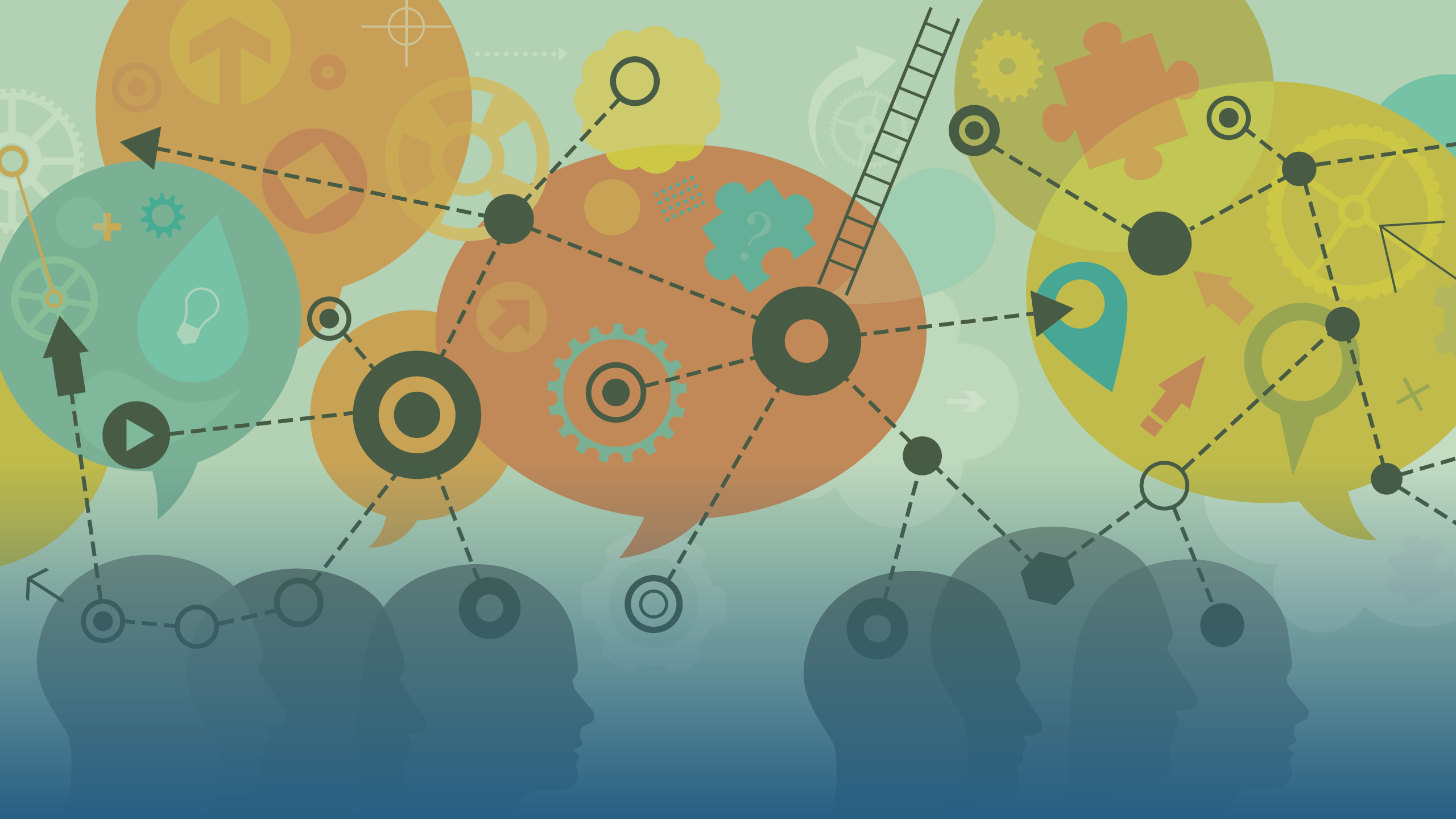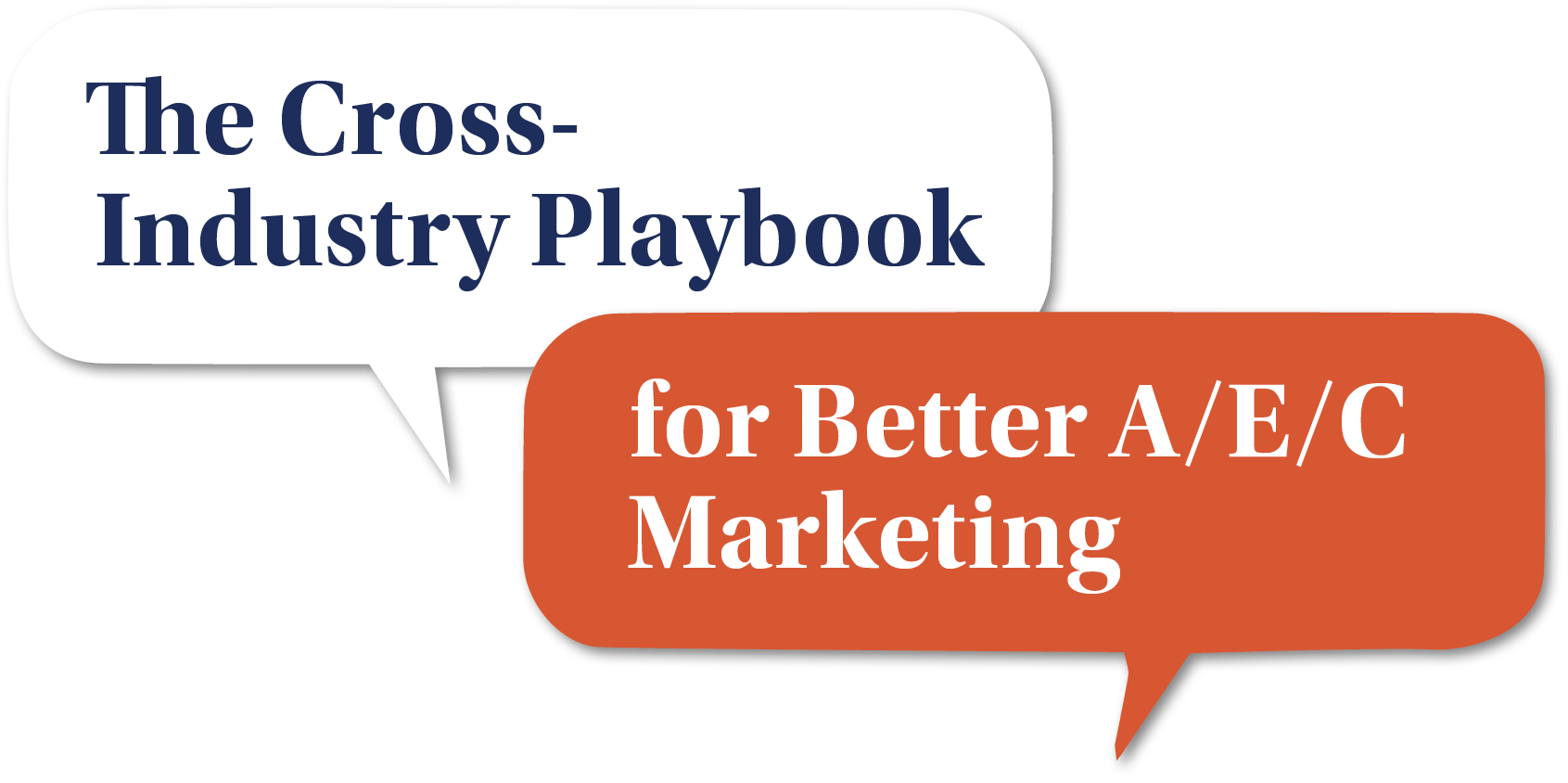



About

IN EVERY ISSUE
1.
PRESIDENT'S MESSAGE
From Intel to Impact: Why Insight Fuels Connection

2.
Publisher’s Message
Lighting the Path with Insight

3.
FROM THE EDITOR
Insight - Gather, Filter, and Inform

Calendar of Events
4.

FEATURES
5.
From Loyalty to Leadership: How Voice of the Customer Research Elevates Strategy

6.
Becoming a Market-Connected Marketer: The Importance of Being All-In

7.
A Minimalist's Approach to Knowledge Management

8.
The Cross-Industry Playbook for Better A/E/C Marketing

9.
Reading the Signals: Early Insights from a Changing A/E/C Landscape

Insight Is More Than Data—It’s Perspective
What if I told you that a 12-person residential architecture firm increased its project pipeline by 60% by studying how life coaches build trust? Or that an interior architecture practice doubled its client retention by borrowing onboarding tactics from software companies?
These aren't hypotheticals. In my work helping small and midsize A/E/C firms refine their marketing strategies, the most transformative results often come from looking beyond our industry's walls. While A/E/C marketing tends to lean on portfolios, project narratives, award wins, and referrals, the firms that thrive today expand their definition of insight.
Insight isn't just about data or benchmarks. It's about perspective—and some of the sharpest insights come from industries that have already solved challenges A/E/C firms still face.
The Three Areas Where A/E/C Marketing Falls Behind
Let's look at three areas where A/E/C marketing often lags behind other industries:
Personal branding
Firms showcase projects, but leadership is often invisible. Principals default to generic bios and credentials, missing chances to build the personal trust that drives buying decisions.
Funnel strategy
Marketing is often passive, relying on referrals, replying to RFPs, and hoping past clients remember you. Few firms have systems in place to nurture prospects from the first contact to the signed contract.
Client experience design
The quality of work is high, but the process can be clunky. Onboarding is minimal, communication can falter, expectations aren’t anticipated and managed, and follow-up is inconsistent.
Let’s look at how three other industries excel in these areas and what A/E/C firms can borrow and apply.
1. Personal Branding From the Coaching Industry
The Lesson: Coaches build trust by showing up consistently with a clear, values-driven message. They make it easy for clients to feel connected and confident in their expertise. According to Brand Builders Group, 74% of Americans are more likely to trust someone with an established personal brand.1
The Value for A/E/C Firms: Many A/E/C leaders overlook personal branding, but buyers want to work with people, not just firms. Fit with the team is often a top decision factor, yet many firms miss the chance to make leadership more visible and relatable.
How to Implement This:
- Define a distinct point of view: What’s your firm’s unique perspective? Make it visible across content and conversations.
- Empower your team: Encourage senior staff to develop personal profiles aligned with your brand.
- Share insights weekly: Post consistently on LinkedIn, using stories, commentary, and behind-the-scenes content.
- Provide content tools: Templates and AI prompts help team members contribute easily and on-brand.
- Build visibility: Use blog posts, bios, and speaker opportunities to reinforce your firm's voice.
2. Funnel Thinking From the Consulting World
The Lesson: Consulting firms guide prospects through structured journeys. They create valuable content, nurture relationships, and keep leads engaged from the first interaction to the signed contract.
The Value for A/E/C Firms: Many A/E/C firms rely on chance: attend an event, exchange a card, and hope for an RFP. The absence of a nurturing process means warm leads often go cold.
How to Implement This:
- Map your buyer journey: Identify each step from first contact to proposal, and align each step with a specific marketing content piece or action. This ensures your marketing efforts are directly tied to your business development goals and helps move prospects closer to a decision.
- Offer a lead magnet: Share something valuable, such as a "Working with Us" guide or a cost calculator.
- Follow up automatically: Create a simple three-email sequence with helpful tips and project insights.
- Share valuable content consistently: Blog posts or videos that address frequently asked questions (FAQs) help build trust over time.
- Stay in touch: Check in regularly with useful updates that guide your leads along the buyer's journey. This approach is ideal for an automated nurturing sequence.
3. Client Experience From SaaS Companies
The Lesson: SaaS companies obsess over onboarding and engagement because retention depends on it. They focus on communication, transparency, and consistent touchpoints.
The Value for A/E/C Firms: Even excellent work can be overshadowed by inconsistent communication or clunky onboarding. Firms that focus on how clients experience the process rather than just the completed project stand out.
How to Implement This:
- Map your full client journey: From kickoff to project handoff, identify where friction happens. When you spot a point of friction, brainstorm solutions to address it to prevent it from becoming a repeated issue for future clients.
- Onboard with care: A welcome packet and kickoff meeting set expectations and build confidence.
- Standardize communication: Set regular check-ins and milestone updates.
- Post-occupancy services: Provide follow-ups after project completion and offer ongoing support to assess how the space is functioning for the client.
- Stay connected: Keep in touch with past clients because they remain a vital source of new work. Develop a system to sustain and nurture these relationships.
Tools That Actually Help
- CRM: Manage leads and keep track of follow-ups
- Email platforms: Automate nurturing sequences
- Feedback tools: Simple surveys help track satisfaction
- Personal branding tools: LinkedIn, blogs, speaking engagements
Red Flags to Avoid
- Copying tactics without adapting them to A/E/C
- Overlooking current strengths while chasing trends
- Rolling out systems without team training
- Focusing on vanity metrics over real impact
The Strategic Advantage of Curiosity
A/E/C has long borrowed from other industries, such as lean from manufacturing, agile from tech, and user-centered design from UX. Marketing should follow suit.
The best firms today aren't just building great spaces. They’re building stronger relationships, clearer communication, and standout experiences. Coaching shows us the power of personal connection. Consulting teaches us the importance of a structured experience. SaaS reminds us that how you deliver is as important as what you deliver.
The insights that transform your firm might not come from the next A/E/C seminar. They could come from a newsletter, a podcast, or a case study outside your field. The question isn’t whether these ideas apply. It’s whether you’ll apply them before your competitors do.
Hope Livonne Trory is a marketing strategist and founder of HOPEWORKSDESIGN. She partners with mission-driven A/E/C firms and service providers to craft strategic, human-centered marketing that builds visibility, trust, and a steady stream of leads.
Connect on Linkedin










